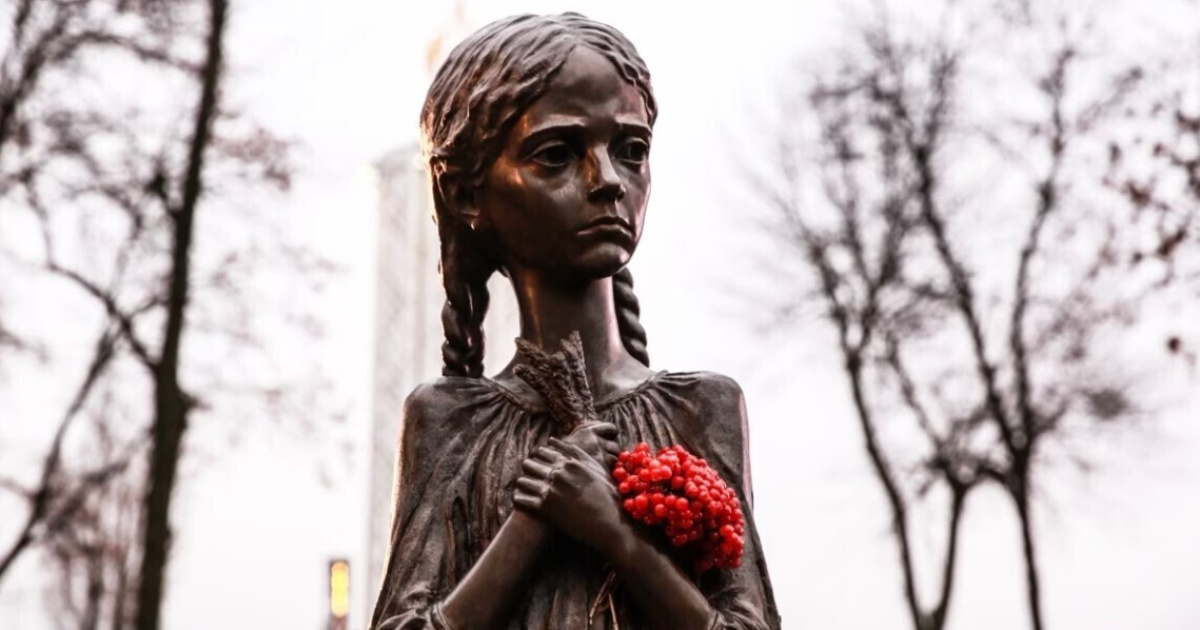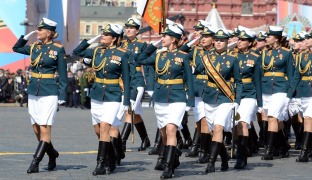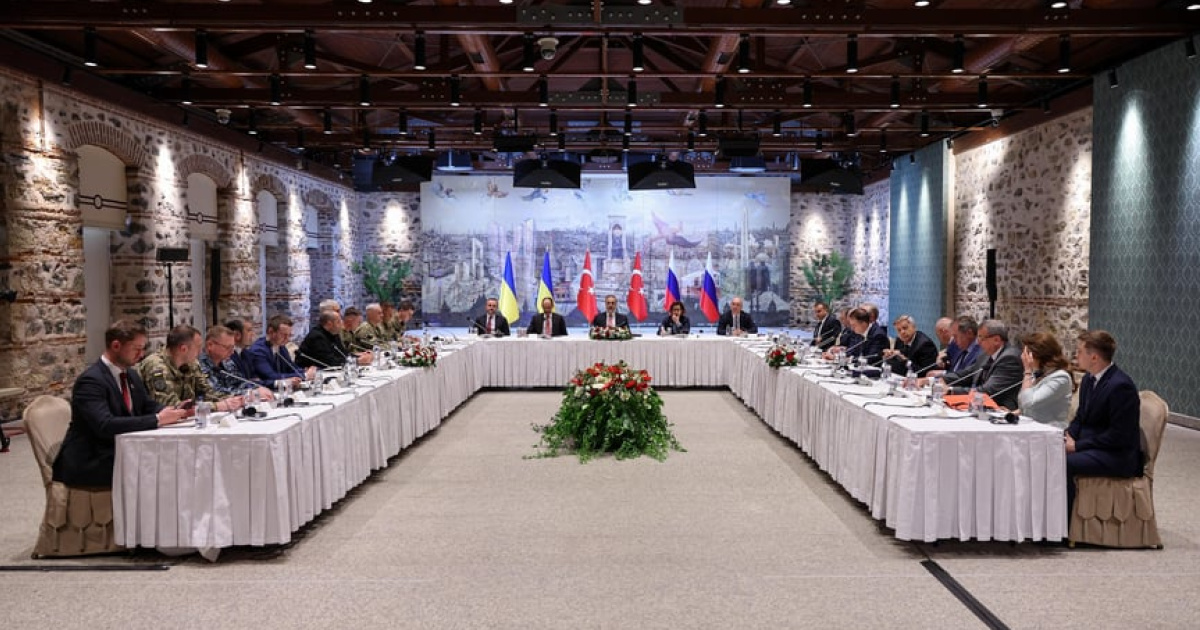
Every year, at the late autumn, the sad anniversaries of the Holodomor of 1932–1933 are commemorated. On the last Saturday of November, Ukraine and the entire world honor the memory of millions of Ukrainians – victims of Stalin's genocide.
Despite the 90-year gap that separates us from those years, the events of the Holodomor are forever etched in the memory of our nation. It is important to once again emphasize the main aspects of this terrible tragedy.
"Either we do it, or we'll be crashed"
The final establishment of Bolshevik power in Ukraine, the inclusion of the Ukrainian SSR into the Soviet Union, became the main historical precondition for the Great Ukrainian Famine of 1932–1933. During the New Economic Policy (NEP) years (1921–1928), Soviet power allowed certain elements of liberalism, but by the late 1920s, it had disappeared entirely. The NEP, as known, contributed to overcoming the devastation, feeding Soviet russia and the USSR, reaching pre-war (1914) levels in several macroeconomic indicators. Despite the fact that the NEP became a "hen laying golden eggs", it was decided to kill it. Unyielding peasants were unwilling to surrender their grain to the state for meager compensation.
This significantly reduced the profitability of agriculture, and the state did not have the strategic reserve of food it needed: crucial for the city and the proletariat. Moreover, there was a weak dynamic in the development of heavy industry, hindering the processes of modernization in the USSR, which remained an agrarian country. The second half of the 1920s was a time of intra-party struggle within the ranks of the Communist Party (Bolsheviks), during which the so-called "left opposition" of Trotskyists-Zinovievites was defeated.
In 1929, Joseph Stalin firmly established his power, continuing to shape the command-administrative system in the state that aspired to achieve a "world revolution". It's worth recalling that the USSR remained in almost complete economic and political isolation for a long time, as its very existence was perceived by the civilized world as a threat. The abandonment of the New Economic Policy (NEP) and the shift towards industrialization and collectivization policies led to global socio-economic transformations in the USSR. The goal was to transform the country into a modernized, powerful militaristic state that built socialism and sought to spread it worldwide.
The Bolsheviks linked the transition to socialism with the transition of agriculture to the path of collective production. At the 15th Congress of the Communist Party of the Soviet Union in 1927, the course was set for the cooperative development of agriculture. The grain crisis of 1927–1928 and the shortage of currency from the sale of grain abroad could jeopardize the Soviet government's plans for the economic development of the USSR. A mechanism for the continuous supply of grain to the state was needed.

Collective farms (kolkhozes) became this mechanism, serving as the hallmark of collectivization policy. It was easier to manage and obtain agricultural products from collective farms than from millions of scattered peasant households. This meant the complete nationalization of the agrarian sector of the Soviet economy. The peasantry in the USSR was assigned the role of a sacrificial ideological victim, destined to bring about the transformation of the country from agrarian to industrial.
Speaking on February 4, 1931, at the First All-Union Conference of Workers of Socialist Industry, Stalin emphasized: "We are behind the advanced countries by 50-100 years. We must cover this distance in ten years. Either we do it, or we'll be crashed".
Thus, by the beginning of the 1930s, all internal factors of the "Stalinist modernization" of the USSR were defined, and ideological accents were set.
The Great Depression and the Holodomor
It is worth noting that the Ukrainian "plebiscite by death" in 1932–1933 was influenced by factors in the international political arena. The Black Thursday on October 24, 1929, the bankruptcy of the New York Stock Exchange, became an ominous signal of the Great Depression from 1929 to 1933, acting as a catalyst for the global economic crisis.

An American looking for a job (the Great Depression period)
BACKGROUND:
With the onset of the Great Depression in the United States, the period of "prosperity" came to an end. The country plunged into a deep crisis. Over three years, almost 5,000 banks went bankrupt, which had generously lent to those eager to buy shares, long being a source of prosperity for millions of Americans. People actively withdrew their savings from surviving financial institutions, leading to a more than twelvefold increase in the circulating money, exacerbating hyperinflation.
Famine riots and deaths, corruption, unchecked crime combined with the existing "Prohibition" since 1920, completed the socio-economic and political disorder in the country. According to various estimates, during this time, the global GDP shrank by 15%, international trade volumes halved, and one in four Americans became unemployed (in some countries, unemployment rose to 33%).
The unprecedented global economic crisis most severely impacted the economies of the United States, Canada, and Australia. Other countries worldwide (except the USSR) were not spared. The global economic crisis also led to the political collapse of the Weimar Republic, contributing to the rise of the Nazis to power in Germany and the activation of ultraright and leftist forces in France.
Less than a month after the start of the Great Depression, on November 10–17, 1929, the Plenum of the Central Committee of the All-Union Communist Party took place in moscow. De facto, it decided to transition to comprehensive collectivization of agriculture, becoming a kind of Stalinist agrarian five-year plan. Collectivized villages were viewed by the Bolsheviks as the main source of industrialization, and peasants became serfs of the 20th century, expected to satisfy all the needs of the so-called Stalinist "great leap forward".
The policy of dekulakization, mass creation of collective farms, and machine tractor stations (MTS), along with increased grain procurement quotas, sparked widespread resentment among peasants toward Soviet authorities. Unwilling to join collective farms, surrender acquired property and livestock, peasants began hiding or destroying them.
Peasant sabotage angered the Bolshevik authorities, who responded accordingly. This became the catalyst for the numerous peasant uprisings in the late 1920s to early 1930s throughout Ukraine. These events unfolded under slogans such as "Down with the Communists!", "Down with the collective farms!", "Long live the UNR!". The Bolshevik leadership interpreted this sabotage as an embodiment of "Ukrainian chauvinism". In reality, it was an expression of the national identity of Ukrainians, displaying mass but poorly organized resistance to genocide and the fight for the preservation of their nation.
The final phase of pacifying Ukrainian peasantry was the so-called "collectivization by famine", whose effective factors were tested as early as 1921–1923. This stage aimed to complete the transformation of peasants into collective farmers, squeezing the maximum amount of grain from them.
Simultaneously, the Holodomor of 1932–1933 carried out the final purge of anti-Bolshevik resistance in Ukraine, facilitating the ultimate completion of collectivization and turning Ukrainians into one of the most loyal nations in the USSR. The adoption of the infamous "Five Spikelets Law" on August 7, 1932, and excessively high grain procurement plans became some of the main prerequisites for the Holodomor.

A girl, victim of famine. Kharkiv (photo by A. Vinerbergher)
Settlements failing to meet procurement norms ended up on "blacklists", leading to the gradual demise of their inhabitants. Local authorities documented numerous cases of cannibalism. The lack of passports and residence permits complicated internal migration for peasants, and the border blockade of the USSR made it impossible for them to leave the republic. Millions in Soviet Ukraine, Kuban, regions of the North Caucasus, and Kazakhstan died of starvation.
However, what does the USA, the Great Depression, and the global economic crisis have to do with this? The answer is quite obvious: the kremlin leadership perceived the global economic crisis as a manifestation of "divine providence", a historical opportunity to address urgent internal problems at the expense of the West.
Western countries received cheap and high-quality grain, flour, and alcohol from the USSR, organizing a true food intervention and saturating the global market with products whose cost was lower than that of capitalist countries' producers. Ukrainian-origin cereals were exported as raw materials in the form of wheat and flour. Cereal crops harvested in Kuban and Kazakhstan were mainly transformed into alcoholic products, which were the most liquid import commodity from the USSR. Almost no one was interested in the methods of obtaining such quantities of grains by the state institutions of the country that was building socialism and implementing five-year plans.
The world knew but remained silent
This historical slogan sounds like cynical irony or a demonstration of double standards in relations between the USSR and Western countries from the late 1920s to the mid-1930s. Against the backdrop of distorted production relationships cultivated by the Bolsheviks during the 1920s and 1930s, the economic activities of Soviet authorities on the international stage were more measured. It is worth noting that at that time, the USSR was recognized by several countries worldwide, but the first proletarian state was not fully integrated into the global economic system, creating certain trade and economic difficulties. Throughout 1931, the West refused to buy oil, timber, and partially even grains from the USSR. Then protests against the import of butter, furs, sweets, salmon, razor blades, and other goods began in Western countries.
The so-called "golden blockade" of 1925–1932, in which France, Great Britain, and the USA participated, dealt a significant blow to the Soviet economy. However, this did not prevent the kremlin from conducting grain intervention on the world market, aiming not only to obtain currency but also to outpace competitors through grain and flour dumping. Signs of success in Soviet foreign trade are reflected in the volumes of investments in industrial production funds, which in the USSR amounted to 438 million rubles in 1929 and already reached 1 billion 220 million rubles in 1932.
Accumulated financial assets were directed towards the development of russian industry. Therefore, it's not surprising that during the first five-year plans, 53 large mines were put into operation in the Donbas, where imported cutting machines and pneumatic hammers were used. Three fully integrated metallurgical plants – Zaporizhstal, Azovstal, and Kryvorizhstal – were completed. Finally, the most grandiose symbol of the first five-year plan became the Dnipro Hydroelectric Station, where six powerful turbo generators from the American company General Electric were installed.
Against the backdrop of mass unemployment and a decline in demand for most goods in the leading countries of the world, the USSR began to attract American and European workers and engineers en masse to work in the Soviet Union. Western countries sold their technologies, allowing Stalin to initiate and successfully complete industrialization.
From the autumn of 1926, the American company Hugh L. Cooper & Co managed concrete work, cementation in the USSR, organized equipment procurement, and the training of Soviet specialists abroad. The owner of the company, Colonel Hugh Lincoln Cooper, was awarded the Order of the Red Banner of Labor. In total, thanks to Western technologies and the recruitment of foreign specialists on Soviet territory, about 300 industrial facilities were built, including full-cycle production plants. Thus, Soviet, like russian, industrialization from the late 19th to the early 20th century largely occurred thanks to foreign support.

Construction of the Dnipro Hydroelectric Station (early 1930s)
Despite anti-bourgeois rhetoric, the events of collectivization, the Holodomor, political repressions, the creation of the GULAG system, on November 16, 1933, the United States recognized the USSR and established diplomatic relations. Almost a year later, on September 18, 1934, the Soviet Union became a full member of the League of Nations.
Despite the information blockade imposed by the kremlin regarding the famine in the USSR, a "leak of information" did occur. The collection, establishment of communication channels, and transmission of information could only be organized by a group of individuals involved in state secrets or based on the evidence they gathered. These individuals could have been representatives of the party elite or the creative intelligentsia. Therefore, it is likely not a coincidence that the major terror in Ukraine, initiated by the 2nd Secretary of the Central Committee of the Communist Party of Ukraine, Pavel Postyshev, started precisely in 1933. Mass purges, the case of the Ukrainian National Center, and the "Executed Renaissance" are links in one historical chain.
The West simply turned a blind eye to it. After all, it was beneficial for them to cultivate economic relations with the USSR, receiving the "bloody bread" from it. The Bolsheviks completed industrialization, allowing the Soviet Union to rank second in the pace of industrial development on the eve of the Second World War. Western countries (largely due to Soviet grain and alcohol exports) overcame the economic crisis. The only ones in the most disadvantageous position were the repressed Ukrainian intelligentsia and peasants, millions of whom died from famine... The world knew, but remained silent...
3.9 or 10.5 million?
The accurate accounting of the number of deaths during the Holodomor of 1932-1933 in Ukraine is a serious scientific problem that both domestic and foreign researchers have been grappling with for several decades. As of today, this more or less established figure fluctuates from 3.9 million to 10.5 million people. Ukrainian demographers defend the first figure, while some domestic historians and criminologists argue for the second. Demographers consider their number scientific, while those advocating the 10.5 million figure are criticized for introducing political considerations. However, 10.5 million is acceptable to most foreign scholars and Ukrainian diasporas, who have always believed that Ukrainians lost more during the Holodomor than Jews (6 million) during the Holocaust.

Stepan Sosnovy - the first researcher of the Holodomor events of 1932-1933 (photo from criminal case No. 022649)
BACKGROUND:
The calculation of the number of victims of the Holodomor of 1932-1933 in Ukraine began during the German-Soviet war of 1941-1945. The first attempt was made by the Kharkiv agronomist-economist Stepan Sosnovy. During the German occupation of Kharkiv, his fundamental article "The Truth about the Famine in Ukraine in 1932-1933" was published in the weekly issue of the newspaper "Nova Ukraina" on November 8, 1942. Using the formula of compound percentages, he justified the quantitative losses from famine at 4.8 million people. According to Sosnovy, the total demographic losses of the USSR from 1932 to 1939 amounted to 7.2 million people.
Analyzing the cause-and-effect relationship, Sosnovy was the first to call the famine of 1932-1933 artificial, considering it a socio-cide of Ukrainian peasantry. He conducted a monthly, daily, hourly, minute-by-minute, and second-by-second calculation of those who died of hunger, noting its chronological frames: September 1932 to May 1933.
In the post-war period, Western scientists actively joined the investigation of the events of the Holodomor of 1932-1933, and since the late 1980s, domestic researchers have also been involved. In early 2014, researchers from the Ptoukha Institute of Demography and Social Studies of the National Academy of Sciences of Ukraine found copies of statistical tables in the russian State Archive of Economics. These tables serve as a detailed report on the dynamics of mortality in the Ukrainian SSR in 1932-1933. The originals were destroyed by Soviet authorities after the Nazi Germany's invasion of the USSR in 1941.
The analysis of the available digital data, the application of demographic laws, the ratio of natural mortality to excess mortality, and the projected population growth of Soviet Ukraine in the absence of famine formed the basis for the overall number of victims within the republic from 1932 to 1933/1934. According to the calculations of Oleksandr Hladun, Natalia Levchuk, Emelian Rudnytsky, American demographer Oleh Volovyna, and others, Ukraine lost 3 million 941 thousand people, of which 1 million 100 thousand were unborn.

Such figures were considered non-canonical until the release of the collective monograph "Genocide of Ukrainians in 1932-1933 Based on Materials of Pre-trial Investigations" in 2021. This publication became possible thanks to the work of an expert commission under the patronage of the Security Service of Ukraine (SBU), led by Mykola Herasymenko. The team included members from the Holodomor Museum, particularly Olesia Stasiuk, and a group of historians: Vasyl Marochko, Volodymyr Serhiychuk, Roman Podkur, Roman Tesliuk, and others.
This latest methodology was based on the principle of modeling the number of victims by creating clusters. Tested in the 1990s when calculating the number of victims of the Khmer Rouge regime from 1975 to 1978 in Cambodia, this methodology was applied to determine quantitative indicators and the casualties of the Holodomor. The territory of the then Ukraine was divided into 8 regions, characterized by seven criteria of their specific similarity: population size, fulfillment of grain procurement plans, proximity to cities with a population of over 50 thousand people, natural-climatic conditions were taken into account, and the highest number of victims in certain areas.
These parameters formed the basis for calculating the number of victims of the Holodomor of 1932-1933, which was performed by a computer program estimating demographic losses across the entire Ukraine.
The result was staggering. The computer program concluded that 9 million 100 thousand people died within the Ukrainian SSR, and an additional 1 million 400 thousand perished within the territories where Ukrainians constituted the ethnic majority.
Despite the absence of a settled position regarding the fixed and probable number of Holodomor victims, these events place Ukraine and Ukrainians in the sad ethnic pantheon of countries and peoples that suffered perhaps the greatest demographic losses during the peaceful times of the 20th century.
Oleksandr Saltan, Ph.D. in Historical Sciences, Associate Professor, Kharkiv




